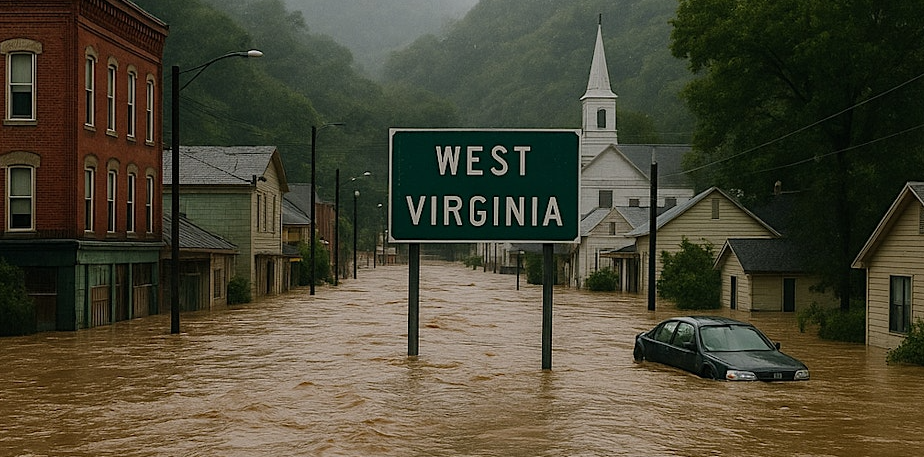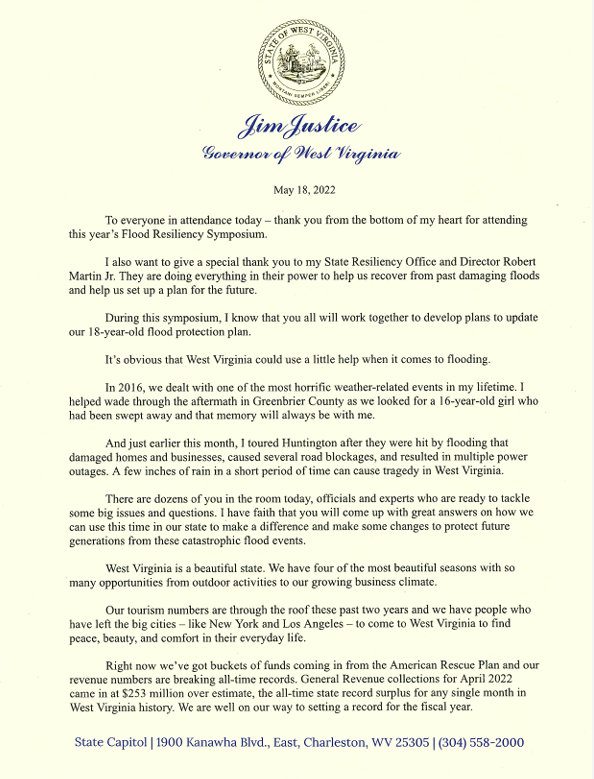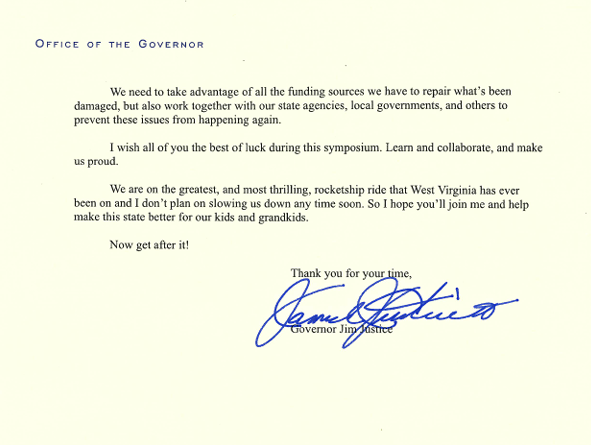2025 Flood Resiliency Plan Symposium
WV Code §29-31-3 tasks the West Virginia State Resiliency Office with performing annual reviews and biennial updates to the State’s Flood Resiliency Plan. The plan was completed in Fiscal Year 2024. A collective work group of organizations were consulted to generate input for this first review. Crowd sourced feedback gathered at the 2025 Flood Resiliency Plan Symposium was integrated into the review process. Data gathered from this review will be used to help guide the first update of the plan in Fiscal Year 2026.
Local, state, federal, and non-governmental organizations gathered in Charleston, WV on Tuesday, April 29, 2025 for a one-day symposium to conduct a review of the plan and were presented with the following five questions:
1. Is the information contained within the document current and do the links and navigation tools within the document function properly?
2. Do the three methods of prioritizing how entities can select their actions provide sufficient guidance to simplify the process or do additional prioritization measures need to be identified?
3. Are the nine sectors identified to categorize entities that have a role in resiliency sufficient or do they need further refinement to make navigating the plan more simplistic?
4. Are the entities not identified within the plan that contribute, or can contribute, to flood resiliency in West Virginia?
5. What Potential Actions exist for the entities identified in the plan as "reserved"?

2024 Flood Symposium
West Virginia has one of the highest flood risks in the United States. Flooding can push families and communities to the brink and past their ability to recover.
While catastrophic flood events, like that which occurred in 2016, attract significant national concern, many smaller floods occur annually which garner much less attention.
With funding from the National Science Foundation, a multi-agency team is developing the West Virginia Flood Resiliency Framework. This tool will be a freely available online resource containing materials to guide residents, local leaders, non-profits, and state officials in efforts to increase flood resiliency.
Recently, a major milestone in building the framework took place. A two-day symposium was held on March 12th and 13th, 2024 at the Holiday Inn & Suites in Charleston, WV.
The event was designed to bring together and strengthen the network of people working on flood-related issues.
Attendees participated in a scenario-based exercise and other activities with the following goals in mind:
Gain a common understanding of who the players are and the capabilities they provide before, during and after a flood.
Have a better understanding of how participants and their organizations can coordinate their efforts in each phase of a disaster.
Identify barriers to coordination between agencies and organizations. Identify those considerations that contribute to or detract from individual and/or community resiliency.
The symposium included group facilitations with the Executive Director of Crisis Cleanup and author Aaron Titus. There were presentations from the State Resiliency Office, the WVFRF project team, the WV GIS Technical Center, and the National Weather Service. In addition, there were informative panel discussions and break-out sessions on subjects like Planning for the Disaster Response Cycle and the National Flood Insurance Program.

2022 Flood Symposium
West Virginia's June 2016 flood devastated countless communities and claimed nearly two dozen lives. Shortly after that event, The State Resiliency Office was created. One of the first tasks assigned to the SRO was to coordinate a review and update of West Virginia's Flood Protection Plan which was first developed – and last updated – in 2004. To both take stock of lessons learned from June 2016 and to develop a vision for future flood mitigation, the State Resiliency Office held a two-day Flood Symposium on February 16th and 17th of 2022. The Pew Charitable Trusts and Saint Bernard's Project co-sponsored the event.
The Flood Symposium featured experts from both inside and outside of West Virginia and began to uncover the path forward to better understanding current and future flood risks, reducing vulnerabilities, and transitioning to long-term flood resiliency.

